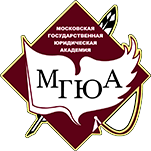Две российские аграрные реформы: историко-правовые параллели
Two Russian Agrarian Reforms: Historical and Legal Parallels
Опубликовано в номере 4 за 2022 год
DOI: 10.17803/2542-2472.2022.22.2.005-011
Автор: Шамсумова Э.Ф., Беляев Д.В., Федоров В.С./ Author: Emma F. Shamsumova, Danila V. Belyaev, Vadim S. Fedorov
Рубрика: ТОЧКА ЗРЕНИЯ
В статье представлена сравнительная характеристика аграрной реформы П. А. Столыпина и аграрной реформы в постсоветской России, анализируются причины проведения данных реформ, сравниваются их цели и задачи. Выделяются проблемные аспекты обеих реформ, а также их сильные черты. Подчеркивается актуальность данной сравнительной характеристики. Выявленные позитивные стороны реформы П. А. Столыпина, по убеждению авторов, демонстрируют, насколько дальновидным был реформатор в решении аграрного вопроса и в целом смягчения политической обстановки в стране, чему способствовала «переселенческая политика». В работе уделяется особое внимание постсоветскому развитию аграрного сектора экономики, так как это было обусловлено необходимостью налаживания путей перехода государственной собственности, находившейся на праве пользования у населения, к собственности частной, являющейся лицом тех рыночных преобразований, которые коснулись экономики в 1990‑х гг. в период распада СССР. Авторы отмечают, что общей положительной чертой обеих реформ является расширение прав землепользователей. При столыпинской реформе крестьяне могли становиться землевладельцами, у них появлялась мотивация к труду. То же самое происходит и в постсоветской России: граждане Российской Федерации в 1990‑х гг. также становились землевладельцами, у них появлялось правомочие на самостоятельное распоряжение своей землей. Недостатки реформ совсем не похожи: государство в первом случае не было готово к массовым переселениям крестьян на восток, к реакционному и консервативному мышлению общины, а во втором — не смогло создать единый орган, контролирующий сферу земельных отношений.
The article presents a comparative characteristic of the agrarian reform of P. A. Stolypin and the agrarian reform in post-Soviet Russia; the reasons for these reforms are analyzed, their goals and objectives are compared. The authors determine problematic aspects of both reforms and their strong features. The study highlights the relevance of this comparative characteristic. It identified positive aspects of the reform of P. A. Stolypin. According to the authors, positive aspects demonstrate how far-sighted the reformer was in solving the agrarian issue and in general softening the political situation in the country, which was facilitated by the «resettlement policy.» The paper pays special attention to the post-Soviet development of the agricultural sector of the economy that took place due to the need to establish ways of transferring state property that was used by the population on the ground of the right of usage that was the imbodiment of market transformations that affected the economy in the 1990s during the collapse of the USSR. The authors highlight that a common positive feature of both reforms is the expansion of the rights of land users. Under the Stolypin reform, peasants could become landowners, and in this case they became motivated to work. The same thing happened in post-Soviet Russia: citizens of the Russian Federation in the 1990s also became landowners, they had the right to independently dispose of their land. The shortcomings of the reforms are not at all similar — in the first case, the state was not ready for the mass resettlement of peasants to the East, the reactionary and conservative thinking of the community, and in the second case, it could not create a single body controlling the sphere of land relations.
нет данных
Открыть во весь экран
Количество просмотров статьи (c 01/10/2016):
